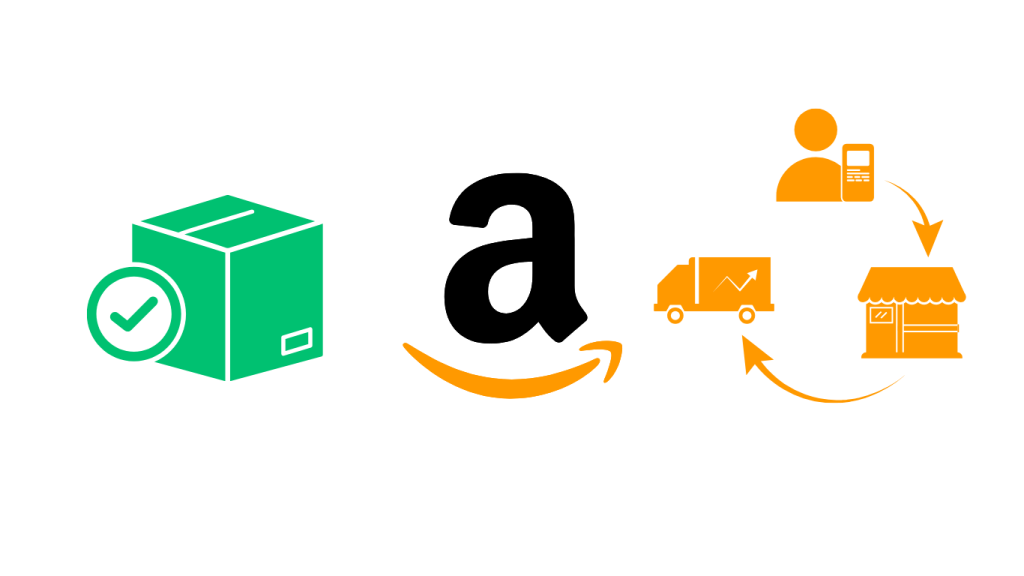Dropshipping with Amazon: Step-by-Step Beginner’s Guide (2025)
If you’ve been thinking about starting an online business but don’t want to spend thousands upfront on inventory, dropshipping might sound like the perfect solution. And since Amazon is one of the biggest marketplaces in the world, the question becomes: Can you dropship on Amazon?
The short answer is yes—but it comes with rules, challenges, and opportunities you need to understand. In this guide, I’ll break down everything you need to know about dropshipping with Amazon—how it works, the pros and cons, and practical steps you can take today to get started.
Think of me as your friend who’s already gone through the trial and error, here to give you the real scoop.

1. What is Amazon Dropshipping?
Let’s start with the basics. Dropshipping is a business model where you sell products online without holding any inventory. Instead, when a customer places an order, you buy the product from a supplier, and that supplier ships it directly to the customer.
So, where does Amazon come in? Well, Amazon lets you create a Seller Central account and list products on their marketplace. When someone buys your item, you pass that order to your supplier, who fulfills it on your behalf.
But here’s the catch: Amazon has strict rules about dropshipping. According to their policy, you can dropship, but you must be the seller of record. That means the packing slip, invoice, and all customer communication should identify you as the seller, not your supplier.
👉 In plain English: You can’t just order from Walmart, AliExpress, or another retailer and ship directly to your Amazon customer. If Amazon finds out, you risk account suspension.
2. How Amazon Dropshipping Works (Step-by-Step)
Here’s a simple step-by-step of how it looks when done correctly:
Step 1: Find products to sell.
You’ll need a niche and a set of reliable suppliers. This could be wholesale suppliers, manufacturers, or private-label partners.
Step 2: Create an Amazon Seller Account.
Sign up for either an Individual or Professional plan (Professional is $39.99/month, and worth it if you’re serious).
Step 3: List your products.
You upload product titles, descriptions, pricing, and keywords to Amazon’s marketplace.
Step 4: Customer buys your product.
The order comes through Amazon’s platform.
Step 5: You forward the order to your supplier.
The supplier packages and ships the product directly to the customer—but using your brand and business details.
Step 6: Provide customer service.
Even though your supplier handles shipping, you’re still responsible for customer communication, handling returns, and making sure everything is smooth.
That’s it in a nutshell!
3. Amazon Dropshipping Rules You Must Know
Amazon is all about protecting its customers, so it enforces strict rules for sellers. Here are the big ones:
You must be the seller of record on all paperwork.
You cannot buy products from another online retailer and have them shipped directly to your customers.
You are responsible for customer service and returns.
You must remove any information from suppliers that identify them (like logos or addresses).
If you violate these rules, you could face suspension or a permanent ban from Amazon. And trust me, that’s the last thing you want after putting in the work.
4. Benefits of Dropshipping with Amazon
So why do people still try Amazon dropshipping? Simple
Benefits of Dropshipping with Amazon
✅ Massive customer base. Amazon has over 300 million active users, meaning your products get instant visibility.
✅ Trust factor. People feel safer buying from Amazon than from a random Shopify site.
✅ Low startup cost. You don’t need to buy inventory upfront.
✅ Infrastructure ready. Amazon handles a lot of the tech, payments, and customer flow.
For many beginners, the idea of tapping into Amazon’s traffic without buying stock upfront is appealing.
Downsides and Risks of Amazon Dropshipping
Now, let’s be real—it’s not all sunshine and passive income.
❌ High competition. Thousands of sellers compete on Amazon, often driving prices down.
❌ Low profit margins. With Amazon fees, supplier costs, and competition, margins can be thin (sometimes only 10–20%).
❌ Risk of suspension. One policy slip-up can lock your account.
❌ No brand control. Unlike Shopify, you can’t really build a strong brand presence on Amazon—it’s Amazon’s marketplace, not yours.
6. Amazon FBA vs Dropshipping: Which is Better?
You might be wondering: Should I just use Amazon FBA instead?
Here’s the breakdown:
Dropshipping: No inventory, lower startup costs, but less control and smaller profits.
FBA (Fulfillment by Amazon): You send products to Amazon’s warehouses, they handle storage, packing, and shipping. Costs more upfront but gives you access to Prime and higher trust.
👉 If you want to build a long-term brand, FBA is usually better. If you want to test the waters with minimal risk, dropshipping can be a starting point.
🚀 Ready to make money online? Watch this 100% free dropshipping course today and take the first step toward building your online business. No sign-up, no catch — just pure value.

7. Finding Winning Products for Amazon Dropshipping
Your success will depend heavily on the products you choose. Here’s how to find winners:
Look for niche products with steady demand but not overly saturated.
Use tools like Jungle Scout, Helium 10, or AMZScout to analyze competition, sales data, and keywords.
Avoid products with high return rates (like electronics).
Consider small, lightweight items that ship cheaply.
Some niches that tend to work well:
Home & kitchen gadgets
Pet products
Beauty and self-care tools
Fitness accessories
8. How to Start Dropshipping on Amazon (Beginner’s Guide)
Let’s put it all together:
Sign up for Amazon Seller Central. Choose the Professional plan if you’re serious.
Pick your niche. Do research using keyword tools and Amazon’s Best Sellers list.
Find a supplier. Ideally a wholesale supplier or manufacturer who can ship directly to customers.
List your products. Use keywords in your titles and descriptions for Amazon SEO.
Set competitive prices. Factor in Amazon’s 15% referral fee and supplier costs.
Fulfill orders. Send customer details to your supplier ASAP after a purchase.
Provide customer service. Respond quickly to messages and handle returns smoothly.
9. Tips to Succeed with Amazon Dropshipping
Focus on customer experience. Fast responses, easy returns, and good communication can set you apart.
Optimize your listings. Use high-quality photos, keyword-rich titles, and clear bullet points.
Price smartly. Don’t undercut so much that you lose profits.
Stay compliant. Always follow Amazon’s policies to avoid suspension.
Think long term. Consider transitioning to FBA or building your own store once you’ve tested products.

10. Alternatives to Amazon Dropshipping
Amazon isn’t your only option. In fact, many dropshippers prefer Shopify or Walmart Marketplace for more freedom.
Shopify + AliExpress/Zendrop: Full control over your brand, better profit margins, but requires driving traffic.
eBay Dropshipping: Still popular, though policies are strict.
Walmart Marketplace: A growing platform with lower competition.
Sometimes, starting outside of Amazon can be less stressful and more profitable.
Conclusion: Is Amazon Dropshipping Worth It?
So, is dropshipping with Amazon a good idea? The answer is: it depends on your goals.
If you want to dip your toes into e-commerce without spending thousands upfront, Amazon dropshipping can be a starting point. But keep in mind the competition, slim margins, and strict rules.
For many sellers, Amazon dropshipping is a way to test products, learn the ropes, and eventually move into something more sustainable—like Amazon FBA or building a Shopify brand.
At the end of the day, the best way to succeed is to start small, follow the rules, and keep learning as you go. Think of Amazon dropshipping as a stepping stone, not the final destination.
